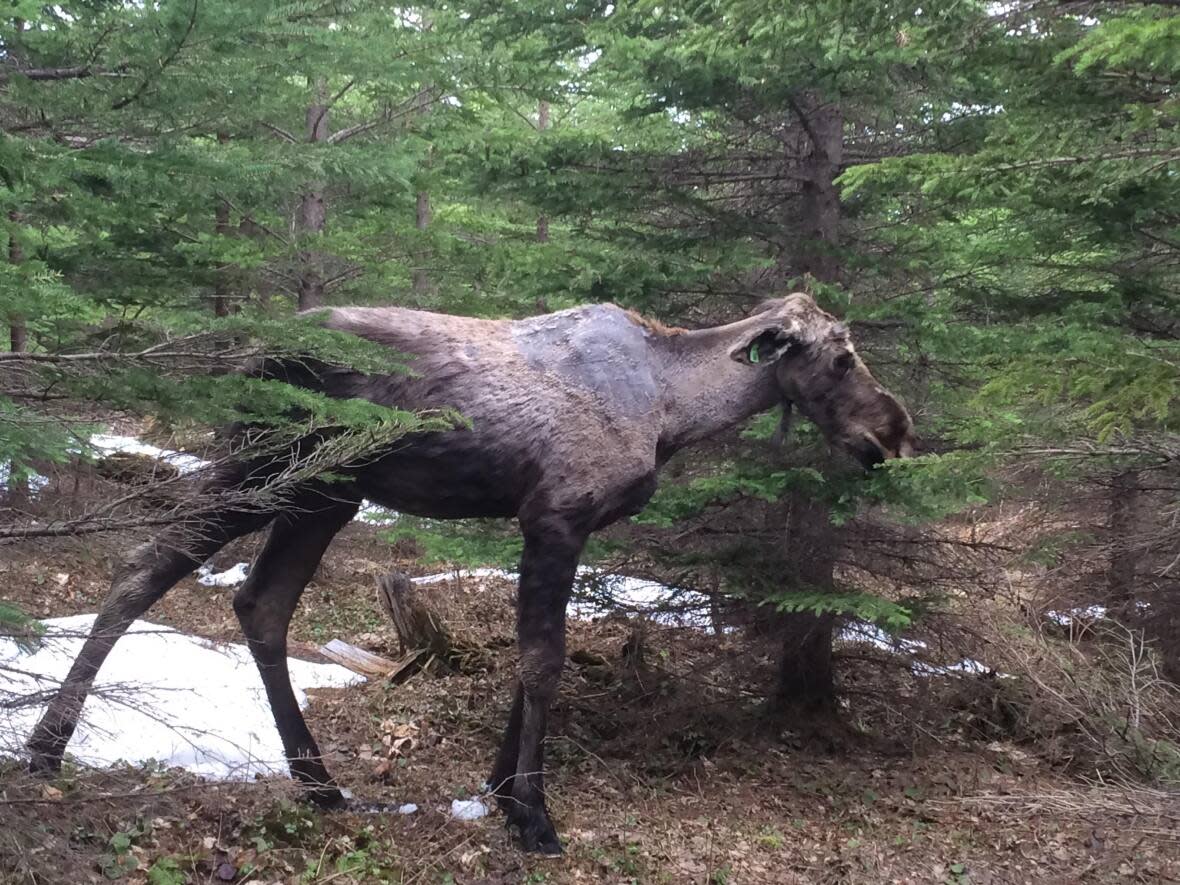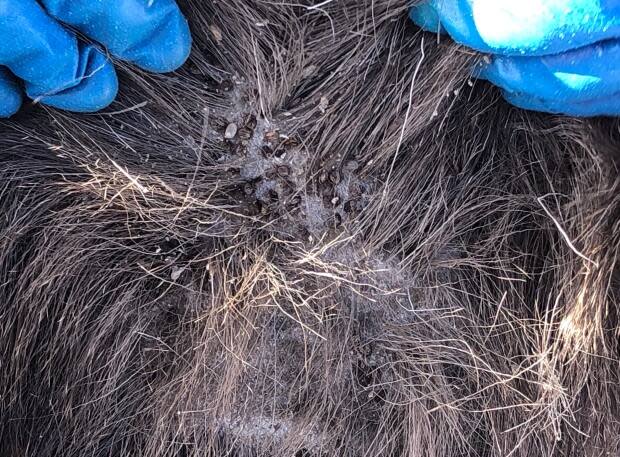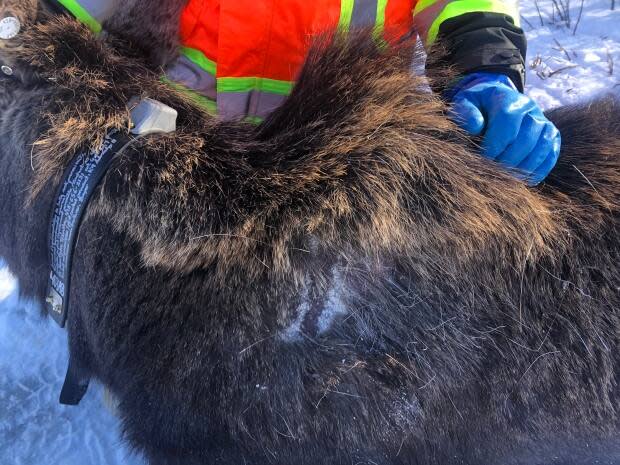Early research suggests winter ticks are killing young moose in New Brunswick

A researcher studying moose in New Brunswick and Quebec says recent data shows an infestation of ticks can be fatal for a moose calf.
Steeve Côté, a biologist at Laval University, says researchers began to take interest in how ticks were affecting moose after anecdotal evidence arose from the New England states.
Hunters and hikers reported finding moose carcasses, especially young moose, showing signs of bad tick infestations.
"So we set up a project where we experimentally remove or greatly reduce the number of ticks on half of the animals we captured and not on the other half," Côté said in an interview, "And we followed them using GPS collars following their treatment."

The first experiment was carried out in 2020 in southern New Brunswick and areas of Quebec, and Côté said the results that year certainly suggested the ticks were taking a toll.
"In 2020 we marked 108 animals, mainly calves. And we found that we lost 20 calves over the winter, like between January and May, that were untreated and five that had received the original treatment."
"And so there was quite a big difference. It was a fourfold difference in mortality."
The results this past winter showed similar results, with three of 46 treated calves dying, while the same number of untreated animals had a 50 per cent mortality rate, or a loss of 23 calves.
"So now we have a difference that is like seven or eight times differences," Côté said, "And so there seems to be quite a strong effect of ticks on the probability of survival of calves over the winter."

The ticks hatch in the fall as larvae and climb onto a host. They'll spend the winter feeding off the host until they reach adult size, usually from February until early May, when the females will drop off to lay eggs and begin the cycle all over again.
The infestations on a baby moose can be on a horrific scale.
"We're talking about several thousand ticks … and some animals that have been reported to have up to 80,000 ticks… So it could be a very large number," Côté said.
That many parasites feeding on a young moose takes a huge physical toll, often leading to anemia.
"It could represent sometimes up to half, up to two-thirds of the blood volume of a calf, for instance. so it could be substantial," Côté said.

The animal is also driven to distraction by itching, feeds less and will scratch patches of hair off trying to ease the irritation.
That makes thermal regulation more difficult.
"When you feed less, you scratch more and somebody is eating your blood, the animal is losing condition and eventually they die of a low body condition in late spring, typically."
Côté said the tick problem seems to be a combination of a few factors.
Milder climate conditions are helping the ticks thrive. Hot, humid summers and mild winters increase the population.

There are also a lot more moose in the northeast part of North America, more food for the ticks.
It's not just a New Brunswick problem. Researchers in Maine saw similar results in their moose study this winter.
They marked 100 animals, and lost almost 90 per cent of the calves they followed.
And Côté said in his study in the Quebec City area, only one moose of the 12 untreated animals they tagged actually survived the winter, nearly a 92 per cent mortality rate.
But what can scientists do to help?

"It is a true problem with no easy solutions for sure," Côté said.
He said the best option may be a forest management plan that would encourage moose to spend fall outside the habitat they use in the spring, which would mean the hatching larvae would have difficulty finding a host.
In the meantime, Côté said it's likely we'll start to see a decrease in the booming moose population.
"We don't have the abundance we had even 10 years ago. So, yeah, that decline has already started,
"My prediction, it's that we'll have decreasing moose population for the next decade in most of the regions."
Côté said researchers will be back in the field next winter for one final season of moose tagging and pesticide treatment before the study data is finalized.


